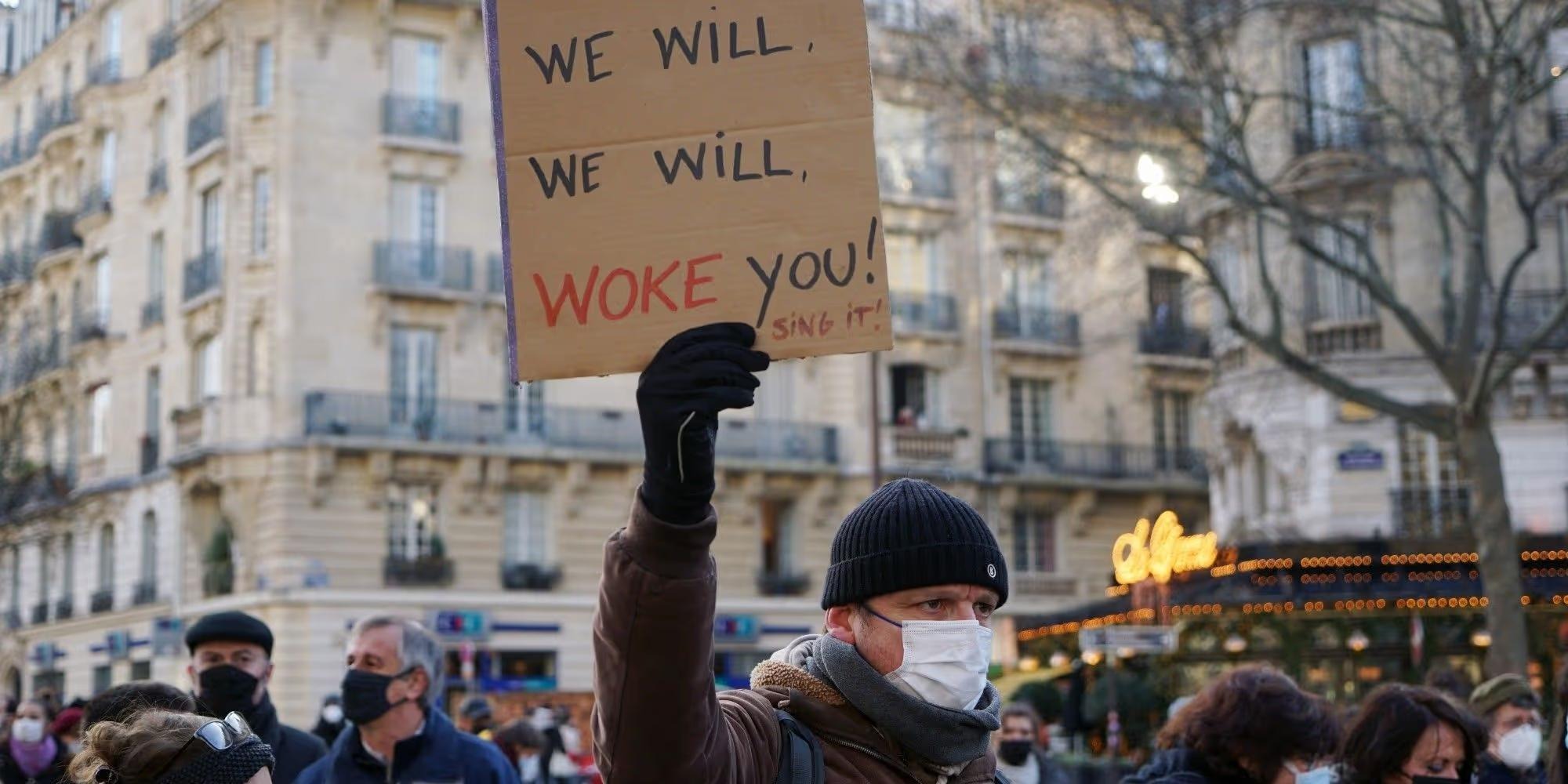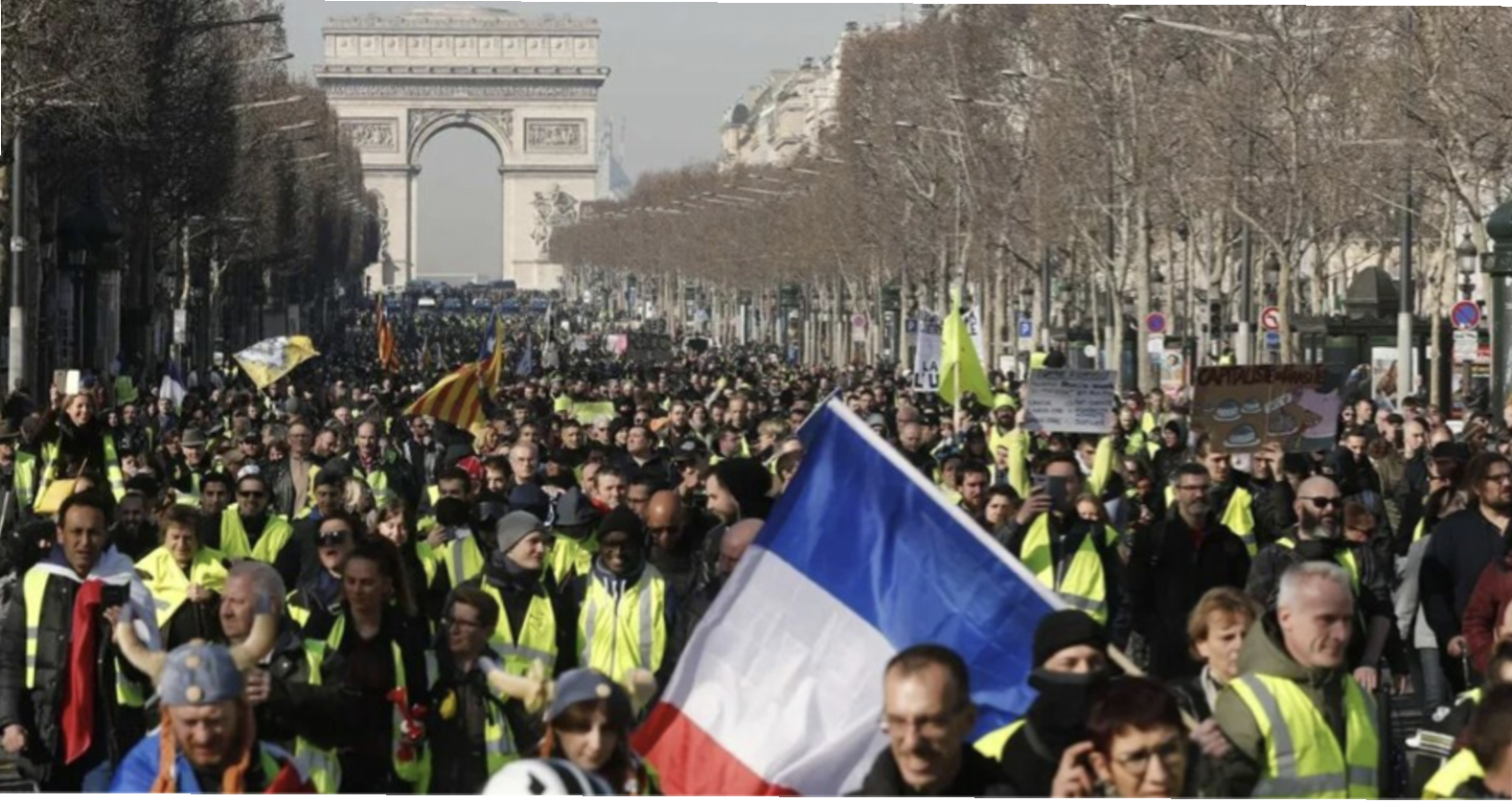In his strategy treatise Revolution Anti-Tech: Why and How? (2016), mathematician Theodore Kaczynski, who extensively studied the history of revolutionary movements, provides a list of postulates and derives five essential rules to follow for any movement seeking maximum effectiveness. We have reproduced them, accompanied by comments and examples.
The Postulates
"Postulate 1. You can't change a society by pursuing goals that are vague or abstract. You have to have a clear and concrete goal. As an experienced activist put it: "Vague, over-generalized objectives are seldom met. The trick is to conceive of some specific development which will inevitably propel your community in the direction you want it to go."
The Yellow Vests movement, which began in France in late 2018, was a grassroots protest initially sparked by opposition to fuel tax increases but quickly evolved into a broader anti-government and anti-austerity movement. The movement, composed largely of people from rural and suburban areas, lacked a unified leadership and had multiple, vague, and abstract objectives. These included demands for 'direct democracy' [1]. However, this lack of clear direction was seen by some as a strategic mistake. It allowed the reformist faction to infiltrate the movement with demands that could easily be integrated into state institutions, such as citizen-initiated referendums, tax reforms, and the adoption of proportional representation in legislative elections. This, in turn, diluted the more radical potential of the protests and played into the hands of those advocating for changes that remained within the bounds of the existing political system.
"Postulate 2. Preaching alone-the mere advocacy of ideas-cannot bring about important, long-lasting changes in the behavior of human beings, unless in a very small minority."
Most NGOs, environmental organizations, and influencers just try to spread awareness through communication campaigns. The current state of the natural world clearly shows that this approach, which relies only on raising awareness, has failed.
"Postulate 3. Any radical movement tends to attract many people who may be sincere, but whose goals are only loosely related to the goals of the movement. The result is that the movement's original goals may become blurred, if not completely perverted. "
We can again mention the Yellow Vests movement. Initially, the main demand was clearly revolutionary, with the goal of overthrowing the government and establishing direct democracy. Later, the movement attracted many reformists who quickly proposed much more moderate and widely accepted demands.
"Postulate 4. Every radical movement that acquires great power becomes corrupt, at the latest, when its original leaders (meaning those who joined the movement while it was still relatively weak) are all dead or politically inactive. In saying that a movement becomes corrupt, we mean that its members, and especially its leaders, primarily seek personal advantages (such as money, security, social status, powerful offices, or a career) rather than dedicating themselves sincerely to the ideals of the movement."
On this matter, the case of Sea Shepherd is worth examining [2]. Paul Watson, the founder, was ousted from the global branch of the organization by leaders who were more concerned with gaining power than with the effectiveness of the movement [3].
The Rules
"Rule (i) In order to change a society in a specified way, a movement should select a single, clear, simple, and concrete objective the achievement of which will produce the desired change."
We won’t go into this further, as it’s a matter of basic common sense (see the attached diagram).

"Rule (ii) If a movement aims to transform a society, then the objective selected by the movement must be of such a nature that, once the objective has been achieved, its consequences will be irreversible. This means that, once society has been transformed through the achievement of the objective, society will remain in its transformed condition without any further effort on the part of the movement or anyone else."
In an article published in Aeon magazine [4], historian David Potter, author of Disruption: Why Things Change (2021), attempts to describe the dynamics of radical change throughout history. He writes, among other things, about Lenin:
'Lenin’s theory of change was a theory of social rupture, which involved imposing such a radical change that a society could no longer return to its previous state. Such upheavals do not happen by chance. There is a set of necessary conditions to provoke them, and there are particular circumstances during which the initiators of disruptive movements tend to achieve their goals.'
"Rule (iii) Once an objective has been selected, it is necessary to persuade some small minority to commit itself to the achievement of the objective by means more potent than mere preaching or advocacy ofideas. In other words, the minority will have to organize itself for practical action."
The influential journal Foreign Affairs notes about David Potter’s book:
'The replacement of a political order that shapes the world by another has always required strategy, leadership, and ideological struggles driven by the search for legitimacy. It is not so much the oppressed and dispossessed who reshape political life, but rather the activists and charismatic leaders who cling to new, powerful ideas and build new coalitions [5].'
Reading between the lines, it becomes clear that a radical change in the political order does not result from a collectively made, democratic decision. A small, determined group forms around new ideas that were once on the fringes of society, seeking to gain power by relying on these ideas. This power is achieved through coalitions, accumulating material resources, building legitimacy, and recruiting activists to train them, among other strategies. In the second phase, practical action aims to establish a power balance with the dominant group(s).
"Rule (iv) In order to keep itself faithful to its objective, a radical movement should devise means of excluding from its ranks all unsuitable persons who may seek to join it."
If we look again at the case of the Yellow Vests, we can see that the movement was joined by groups with contradictory objectives – far-right groups, conspiracy theorists (often the same as the former), reformists, Black Bloc, etc. The Yellow Vests were not structured or organized in a way that could ensure the uniformity of perspective necessary for success. This is all the more difficult when you choose street protests in Paris as your mode of operation.
There is often an unfortunate confusion between the necessary uniformity of viewpoints within a movement and the rejection of diversity. Powerful movements are those that bring together diverse profiles – regardless of religion, identity, gender, or skin color – who come together to pursue a common goal. To use Theodore Kaczynski's words, 'The true anti- tech movement rejects every form of racism or ethnocentrism.'; it is a 'strategic imperative [6].'
"Rule (v) Once a revolutionary movement has become powerful enough to achieve its objective, it must achieve its objective as soon as possible, and in any case before the original revolutionaries (meaning those who joined the movement while it was still relatively weak) die or become politically inactive."
Formed by Manuel Marulanda in 1964 in rural Colombia, the FARC (Revolutionary Armed Forces of Colombia – Army of the People) was a Marxist guerrilla group that emerged from peasant self-defense zones in the 1950s and 1960s. Since its creation, the movement has experienced periods of growth and stagnation, but since 2000 it has clearly been in decline [7]. It’s difficult to assess whether the FARC ever acquired the necessary power to seize control. In any case, Marulanda passed away in 2008, and his organization has been deteriorating, which tends to confirm this pattern.
Disclaimer: We have selected examples of violent movements in this article. This does not mean that we approve of their methods. We would like to remind you that ATR is an open, legal, and non-violent movement.







